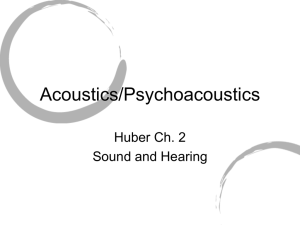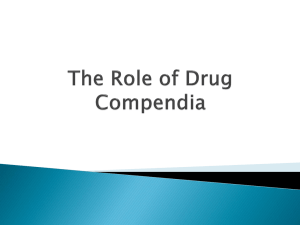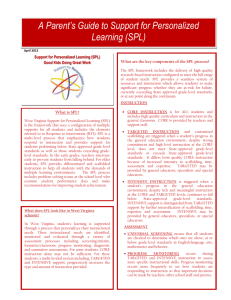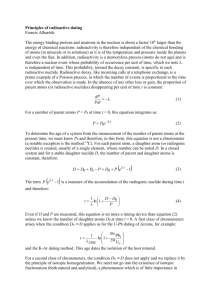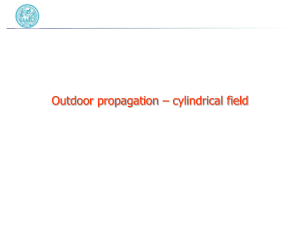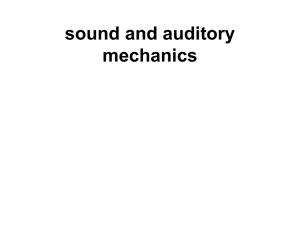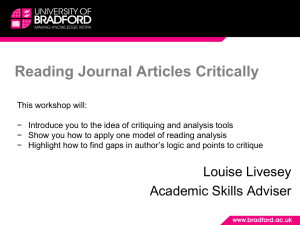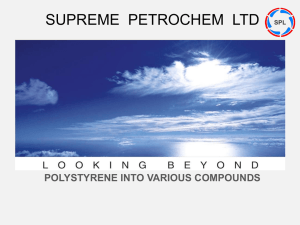Application of Oxidation SPL
advertisement
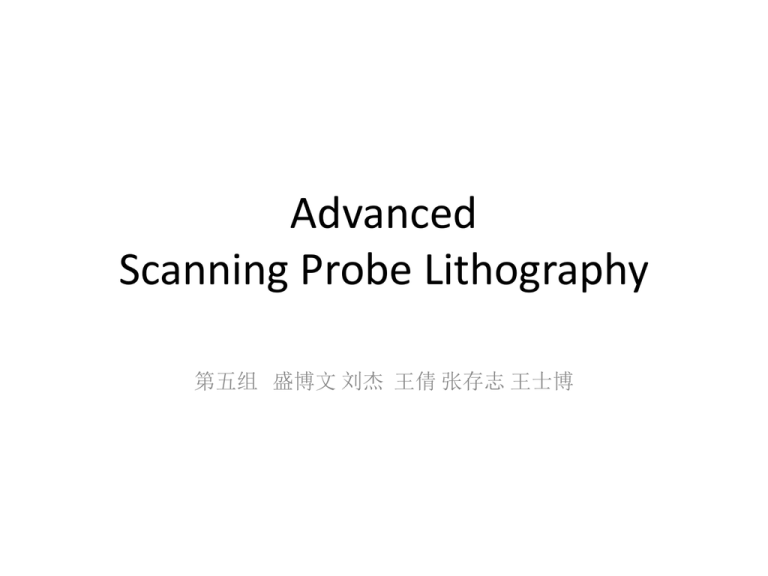
Advanced Scanning Probe Lithography 第五组 盛博文 刘杰 王倩 张存志 王士博 Outline • Introduction • Several Advanced SPL • Outlook Introduction What is SPL Why do we develop SPL? How do we develop SPL What is SPL Schematic of scanning probe lithography Ricardo Garcia. et al. Advanced scanning probe lithography. Nature nanotechnology. 10,1038(2014) Full name: scanning probe lithography a kind of nanotechnology So many methods to develop SPL, but they have common thread which is the core of SPL Classification of SPL The process of the contact or near contact between the sharp probe and the nanoscale region of the sample surface The various methods that control the position of the scanning probe relative to the underneath surface ,also the feedback mechanism of SPL Classification of SPL methods according to the dominant tip–surface interaction used for patterning, namely electrical, thermal, mechanical and diffusive processes Ricardo Garcia. et al. Advanced scanning probe lithography. Nature nanotechnology. 10,1038(2014) Why do we develop SPL The physical limitation of conventional lithography reached A single patterning run about 80nm Conventional lithography • The resolutions below 30 nm with EBL is difficult because of proximity effects Photolithography electron beam lithography Tennant, D. M. in Nanotechnology (ed. Timp, G.) Ch. 4, 161–205 (Springer, 1999). The relationship between resolution and throughput in the advanced scanning probe techniques Martinez, R. V., Losilla, N. S., Martinez, J. & Garcia, R. Patterning polymeric structures with 2 nm resolution at 3 nm half pitch in ambient conditions. Nano Lett. 7, 1846–1850 (2007). The advantages of SPL compared with conventional lithography • SPL is capable of patterning a large variety of materials • Most of SPL writing processes are direct write Just as single-step process • Simplify the facilitates and save money Lin, Y. C. et al. Graphene annealing: how clean can it be? Nano Lett. 12, 414–419 (2012). Some striking examples of SPL’s wonderful capabilities nanoribbon on graphene Patterning of ferritin molecules A nanoring inner radius 160 nm, outer radius 380 nm Height image of three trenches and one bump patterned on a graphene Weng, L., Zhang, L., Chen, Y. P. & Rokhinson, L. P. Atomic force microscope local oxidation nanolithography of Thermal and thermochemical SPL thermal cantilever comprising integrated joule heaters for tip heating 利用悬臂梁尖端高温改变基底 物理、化学性质 Methods of heating laser heating resistively heated 热流传导 Four conduction Radiation一般可以忽略 Air conduction有时可以很大,但是加热面积大,无法使基底产生高温 Conduction through tip较多,并且热流集中,利于局部产生高温 application 880X880pixels Less than 12 seconds 苯二醛基底 Reduced graphene oxide(tc-SPL) 处理后的区域导电性明显增强 电导率实现4个量级的调控 3D Greyscale patterning Ricardo Garcia. et al. Advanced scanning probe lithography. Nature nanotechnology. 10,1038(2014) Bias SPL(b-SPL) • The small size of the AFM tip’s apex and the proximity of the surface facilitates the generation of extremely high electrical fields and, in conducting samples, a focused electron current. • b-SPL experiments can be performed in ambient or liquid environments, which, in turn, increases the number of available chemical species. Oxidation SPL Oxidation SPL is based on the spatial confinement of an anodic oxidation reaction between the tip and the sample surface oxidation process is mediated by the a water bridge General electrochemical reactions in local anodic oxidation The role of water and electric field provides the oxyanions(含氧阴离子) Water meniscus(液膜) confines the reaction laterally, determines the resolution(分辨率) induces the formation of the water bridge electric field generates the oxyanions drives the oxyanions to the sample interface and facilitates the oxidation process Reasons for widespread academic use of o-SPL 1 the ability to nanopattern a wide variety of materials 2 minimal technological requirements(room temperature and atmospheric pressure) 3 performing many tasks concurrently Application of Oxidation SPL—Molecular architectures Typical example: pattern linear arrays of ferritin proteins Main steps to pattern ferritin proteins on a silicon surface AFM image of an array of ferritin molecules Process illustration 1 functionalization of the silicon surface 1 2 removes the self-assembled monolayer in the regions exposed to the field 3 3 2 an APTES monolayer is deposited in the patterned lines 4 ferritin deposited on the amino-terminated(氨基末端) regions of the APTES patterns 4 Application of Oxidation SPL— Nanoelectronic devices Typical example: silicon nanowire transistors Scheme of the fabrication of a very thin and narrow oxide mask Atomic force microscopy images of silicon nanowires Application of Oxidation SPL— Nanoelectronic devices Typical example : Nanoelectronic devices Scheme of the fabrication of a graphene quantum dot Atomic force microscopy image of a single quantum dot Additional SPL methods 1. Nanomachining 2. Nanoscale dispensing 3. dip-pen nanolithography Some examples Mechanical SPL (nanomachining) uses the mechanical force exerted by the tip to induce the selective removal of material from a surface . Schematic of material removal using atomic force microscopy Tseng, A. A. Removing material using atomic force microscopy with single- and multiple-tip sources. Small 7, 3409–3427 (2011). Tseng, A. A. Removing material using atomic force microscopy with single- and multiple-tip sources. Small 7, 3409–3427 (2011). Biological protein patterning using AFM mechanical scratching: a) AFM image of a scratched groove pattern with a typical groove depth of 7 nm and a mouth width of 300 nm. b) AFM image after sequential adsorption of an IgG protein and a fluorescently labeled anti-IgG protein antibody. c) Fluorescence microscopy image of b. d) DGpp surface being scratched by an AFM tip to expose the underlying HApp substrate. e)Scratched surface incubated with a rabbit IgG protein solution. f) A fluorescently labeled anti-IgG protein that selectively binds to the rabbit IgG molecules being incubated with the surface. g) After rinsing, the immobilized protein remains on the exposed HApp scratched regions. Tseng, A. A. Removing material using atomic force microscopy with singleand multiple-tip sources. Small 7, 3409–3427 (2011). NiFe nanoconstriction made by AFM scratching: a) AFM images of a NiFe planar nanowire after machining or scratching. b) Cross-sectional profiles before and after machining. c) Current–voltage ( I – V ) characteristics of nanoconstriction measured before and after machining Outlook & Conclusion SPL in scientific research is established and expanding, however more technological applications still need to be fulfilled. The throughput is a main challenge before application Some other challenges like parallelization and tip lifetime are still to be resolved
